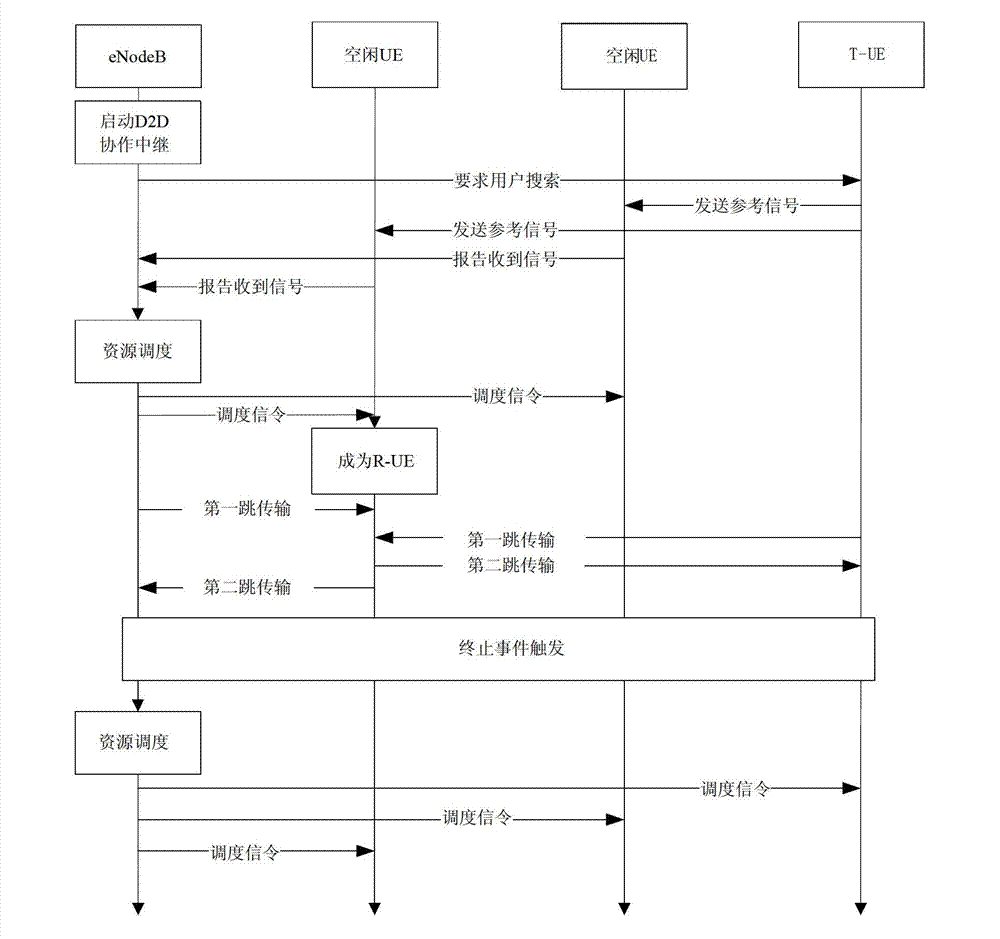Terminal D2D (device-to-device) cooperation relay communication implementation method in TD-LTE-A (time division-long term evolution-advanced) system
A technology of cooperative relay and implementation method, applied in the directions of wireless communication, electrical components, network data management, etc., can solve the problems of frequency selective fading, increase the transmit power of the base station, high cost, etc., to improve the system throughput and reduce the construction cost. The effect of improving network cost and service quality
- Summary
- Abstract
- Description
- Claims
- Application Information
AI Technical Summary
Problems solved by technology
Method used
Image
Examples
specific Embodiment approach 1
[0024] Specific implementation mode 1. Combination figure 1 and figure 2 Describe this specific implementation mode, a method for implementing D2D cooperative relay communication of terminals in a TD_LTE_A system, which is implemented by the following steps:
[0025] Step 1. In the TD_LTE_A system, the terminal cell user in the communication state sends a reference signal CQI for detecting channel quality to the base station;
[0026] Step 2, the base station judges whether there is a cell user whose channel quality cannot meet the normal communication QoS requirements according to the CQI value reported by the terminal cell user in the communication state described in step 1, if the judgment result is no, then return to execute step 1; If the judgment result is yes, go to step 3;
[0027] Step 3. The base station combines the formula according to the load of the current network, the distribution of users in the idle cell, and the number N of users in the idle cell:
[002...
PUM
 Login to View More
Login to View More Abstract
Description
Claims
Application Information
 Login to View More
Login to View More - R&D
- Intellectual Property
- Life Sciences
- Materials
- Tech Scout
- Unparalleled Data Quality
- Higher Quality Content
- 60% Fewer Hallucinations
Browse by: Latest US Patents, China's latest patents, Technical Efficacy Thesaurus, Application Domain, Technology Topic, Popular Technical Reports.
© 2025 PatSnap. All rights reserved.Legal|Privacy policy|Modern Slavery Act Transparency Statement|Sitemap|About US| Contact US: help@patsnap.com



